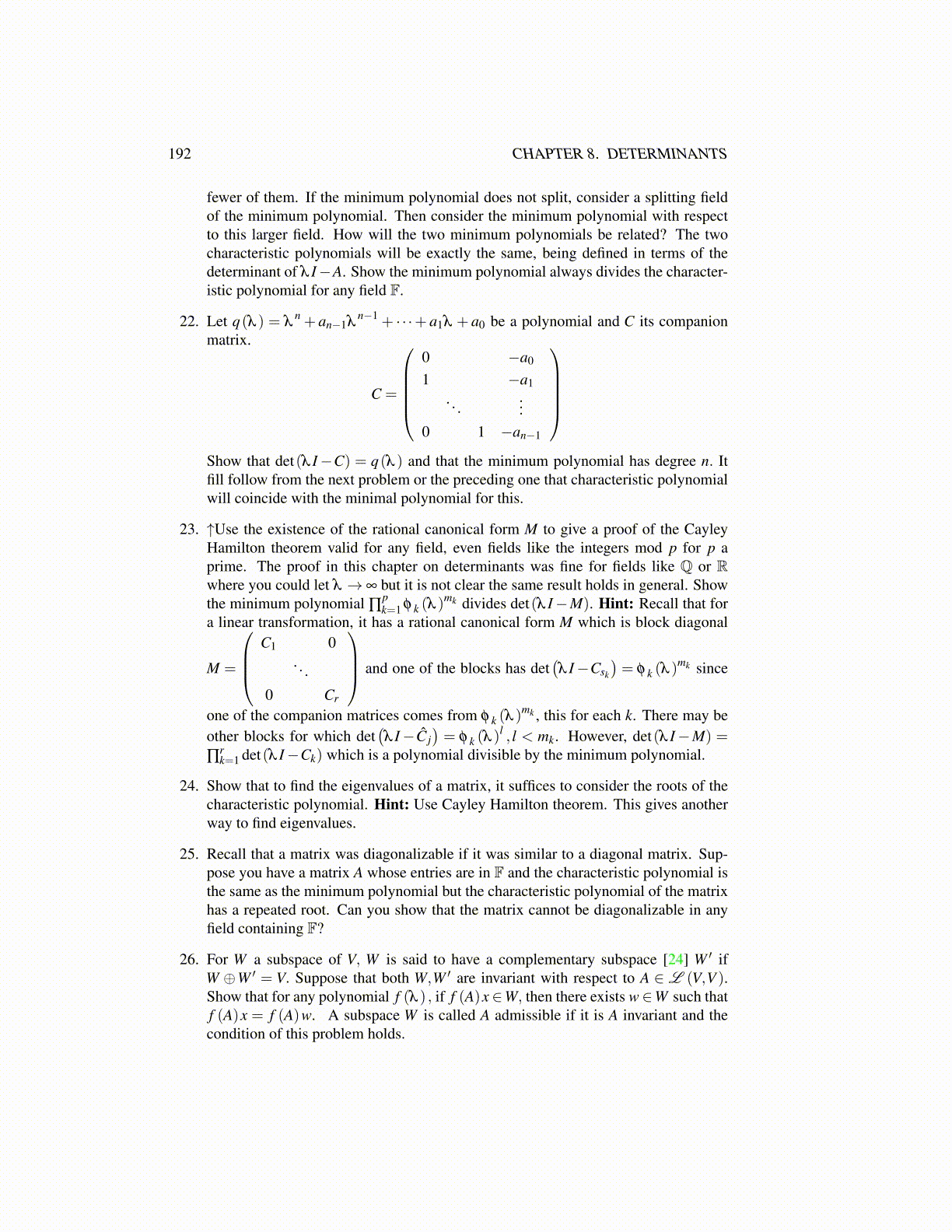
192 CHAPTER 8. DETERMINANTS
fewer of them. If the minimum polynomial does not split, consider a splitting fieldof the minimum polynomial. Then consider the minimum polynomial with respectto this larger field. How will the two minimum polynomials be related? The twocharacteristic polynomials will be exactly the same, being defined in terms of thedeterminant of λ I−A. Show the minimum polynomial always divides the character-istic polynomial for any field F.
22. Let q(λ ) = λn + an−1λ
n−1 + · · ·+ a1λ + a0 be a polynomial and C its companionmatrix.
C =
0 −a0
1 −a1. . .
...0 1 −an−1
Show that det(λ I−C) = q(λ ) and that the minimum polynomial has degree n. Itfill follow from the next problem or the preceding one that characteristic polynomialwill coincide with the minimal polynomial for this.
23. ↑Use the existence of the rational canonical form M to give a proof of the CayleyHamilton theorem valid for any field, even fields like the integers mod p for p aprime. The proof in this chapter on determinants was fine for fields like Q or Rwhere you could let λ → ∞ but it is not clear the same result holds in general. Showthe minimum polynomial ∏
pk=1 φ k (λ )
mk divides det(λ I−M). Hint: Recall that fora linear transformation, it has a rational canonical form M which is block diagonal
M =
C1 0
. . .
0 Cr
and one of the blocks has det(λ I−Csk
)= φ k (λ )
mk since
one of the companion matrices comes from φ k (λ )mk , this for each k. There may be
other blocks for which det(λ I−Ĉ j
)= φ k (λ )
l , l < mk. However, det(λ I−M) =
∏rk=1 det(λ I−Ck) which is a polynomial divisible by the minimum polynomial.
24. Show that to find the eigenvalues of a matrix, it suffices to consider the roots of thecharacteristic polynomial. Hint: Use Cayley Hamilton theorem. This gives anotherway to find eigenvalues.
25. Recall that a matrix was diagonalizable if it was similar to a diagonal matrix. Sup-pose you have a matrix A whose entries are in F and the characteristic polynomial isthe same as the minimum polynomial but the characteristic polynomial of the matrixhas a repeated root. Can you show that the matrix cannot be diagonalizable in anyfield containing F?
26. For W a subspace of V, W is said to have a complementary subspace [24] W ′ ifW ⊕W ′ = V. Suppose that both W,W ′ are invariant with respect to A ∈ L (V,V ).Show that for any polynomial f (λ ) , if f (A)x∈W, then there exists w∈W such thatf (A)x = f (A)w. A subspace W is called A admissible if it is A invariant and thecondition of this problem holds.